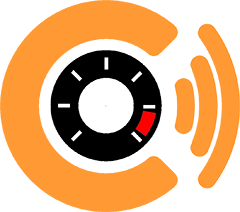ODB Ports
Since 1996, by law, all cars sold in the USA have a standard OBD port. These ports are mechanically and electrically standard for certain mandated functions, like catalytic converter functions, pressure in gas tank (cap is closing well).. these are very well defined and standard.
But, for many advanced vehicle functions the information is brand and model specific. It is also available only to Dealer Service departments
Since 1996, the amount of sensors of a modern car has become huge and they are connected via “buses”, and these goes to “ECUs”. These ECU (computers) that are also “talking together” resulting in the many computers we have in today’s vehicles. From the “single computer” situation of the early days, modern vehicles all have multiple computers aboard (as many as 50 computers on board).
The sensors in modern vehicles measure everything including such simple functions as whether or not : a door is properly closed. The door sensor will send a message to the computer that checks the doors and a warning light will tell the driver that a given door is not closed properly. They measure more significant functions like wheel rotation. If a wheel starts to spin a little bit faster (than the others), the computer would notice this and trigger a tire pressure warning message.
There are also ultra- fast computers that react to emergency situations like the shock sensors (front, side) detecting an event that can trigger the right airbag. But only, if there’s a passenger in the seat.
To make this possible a Canadian Company named “ELM” developed a chip (ELM327) that does the basic work between the vehicle communication and the OBD port. Today other companies offer ELM327 compatible chips or programmable micro computers to provide the diagnostic information.
From this very basic explanation, one can understand that a universal diagnostic system is possible, but extremely complicated, and is dynamically changing with newer models, newer sensors, and newer functions.
We also have to understand that the factory (brands) protect the diagnostic information that enables them to provide such diagnostics. By only having their dealer network having such tools, it protects the dealer Service department’s, especially during the warranty period when they need to complete service work quickly and efficiently.
Once vehicles are out of warranty, a vehicle owner wants the re-assurance that the vehicle is safe for a trip, or safe for their family around town. Once the check engine light comes on it’s important to know what is wrong and to make informed decisions about the repairs needed and their cost.
We, at ChkOBD consider it our mission to provide a convenient and easy to use diagnostic tool, using the widely available OBD to Bluetooth “dongle” and an IOS or Android cell phone
For more information about Bluetooth technology and OBD turn to https://en.wikipedia.org/wiki/On-board_diagnostics
